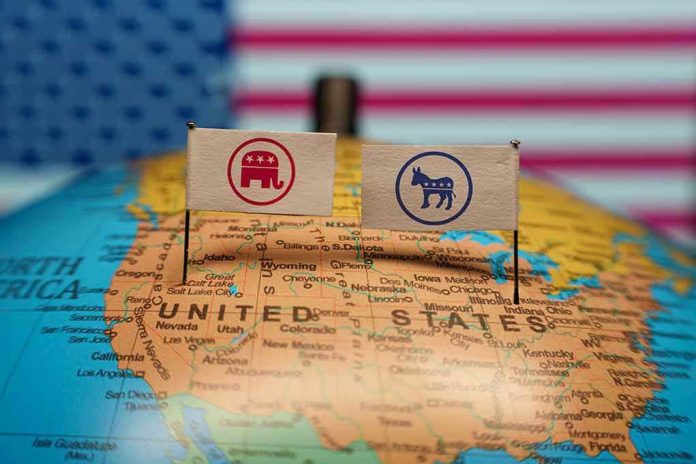
California voters hold the power to potentially flip control of the U.S. House of Representatives through a single ballot proposition that could create up to five new Democratic seats before the crucial 2026 midterm elections.
Story Snapshot
- California ballot proposition could add as many as five Democratic House seats
- New redistricting maps would take effect before 2026 midterm elections
- The outcome could determine which party controls the U.S. House
- Redistricting battle reflects broader national fight over congressional representation
The Golden State’s Power Play
California’s voters face a decision that extends far beyond state borders. The ballot proposition under consideration would redraw congressional district maps, potentially creating a pathway for Democrats to gain significant ground in their quest to reclaim House control. With margins in Congress remaining razor-thin, even a handful of seat changes could reshape the entire political landscape heading into the next presidential election cycle.
Timing Creates Strategic Advantage
The timing of this redistricting effort positions California as the kingmaker for congressional control. Unlike the traditional once-per-decade redistricting that follows the U.S. Census, this mid-cycle remapping would give any gains immediate impact for the 2026 elections. Political strategists recognize that controlling the House during a presidential election year provides enormous leverage over legislative priorities, judicial confirmations, and campaign messaging.
The proposition’s supporters argue that current district lines fail to reflect California’s true political composition and demographic changes. They contend that more competitive districts would better serve constituents and encourage broader political participation across the state’s diverse regions.
National Implications of Local Decisions
Republicans currently maintain a narrow House majority, making California’s potential five-seat swing a game-changing proposition. These seats could provide Democrats with enough cushion to pursue aggressive legislative agendas without relying on moderate members from purple districts. The ripple effects would influence everything from federal spending priorities to oversight investigations and impeachment proceedings.
California's current congressional district maps were drawn by an independent commission that considered 36,280 public comments from Californians. Prop 50 would silence those comments and put in place maps drawn behind closed doors by politicians in Washington, D.C. Vote NO! pic.twitter.com/ap5oxZkiR2
— Ken Calvert (@TeamCalvert) October 1, 2025
Conservative critics argue that mid-cycle redistricting represents an attempt to circumvent established democratic processes. They point out that redistricting traditionally occurs after census data provides updated population figures, ensuring districts reflect actual demographic shifts rather than political calculations. This departure from precedent raises questions about whether other states might follow suit with their own politically motivated remapping efforts.
The Redistricting Arms Race
California’s redistricting initiative reflects a broader national trend where both parties seek every possible advantage in drawing favorable district boundaries. While Democrats criticize Republican-led gerrymandering in states like Texas and Florida, this California effort demonstrates that neither party holds moral high ground when political power hangs in the balance. The result has been an escalating arms race where traditional norms around redistricting timing and methodology continue eroding.
Legal challenges seem inevitable regardless of the proposition’s outcome. Constitutional questions about mid-decade redistricting, voting rights protections, and equal representation standards will likely generate years of litigation. Federal courts have shown increasing willingness to intervene in extreme gerrymandering cases, though the Supreme Court has generally deferred to state authority over redistricting processes.
Sources:
Newsom says California will push to redraw maps in riposte to Texas plan










